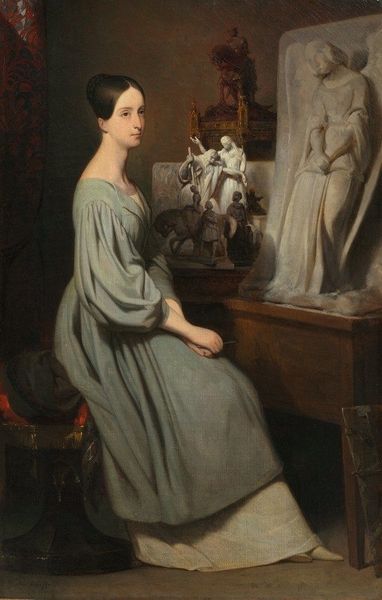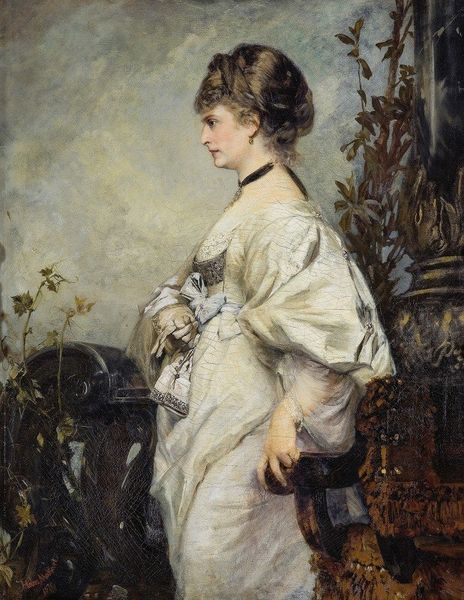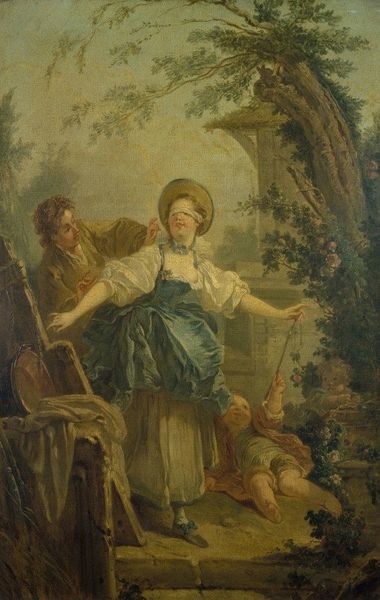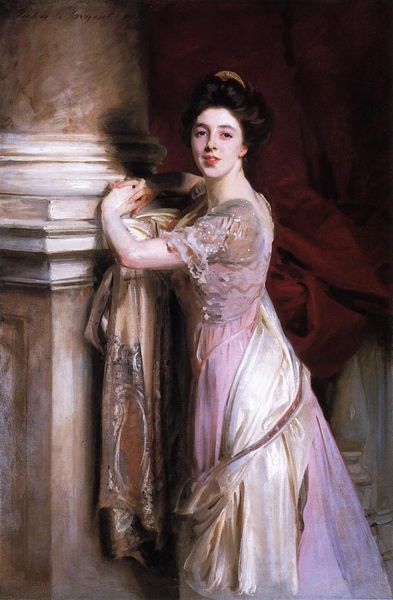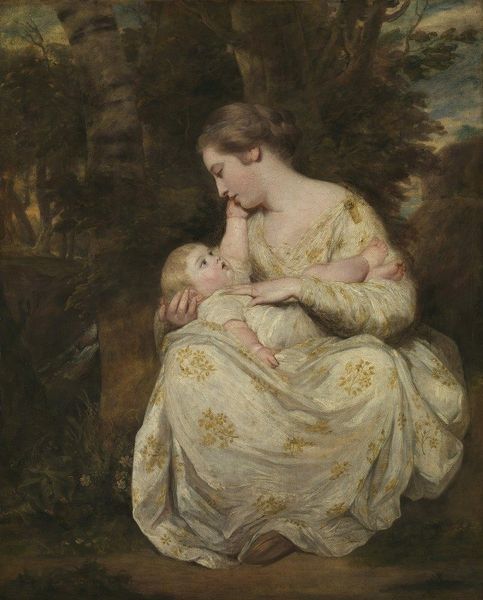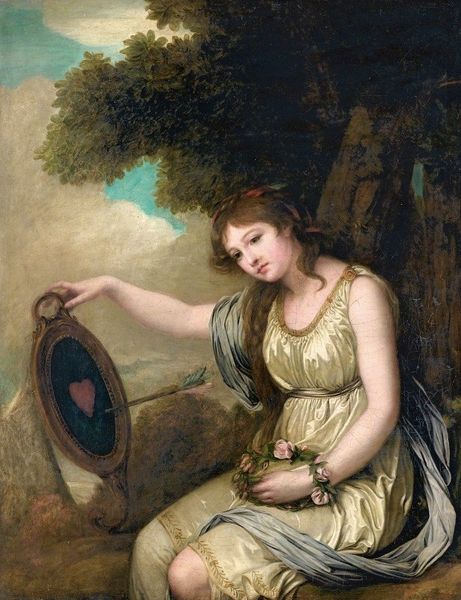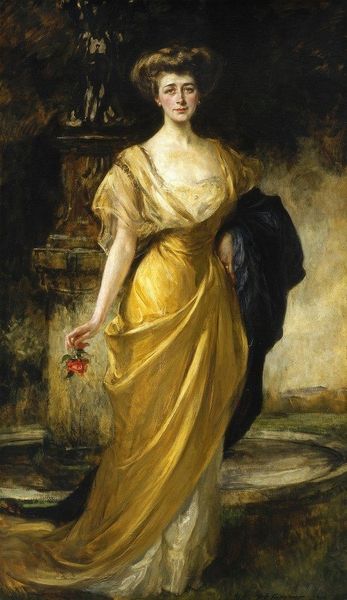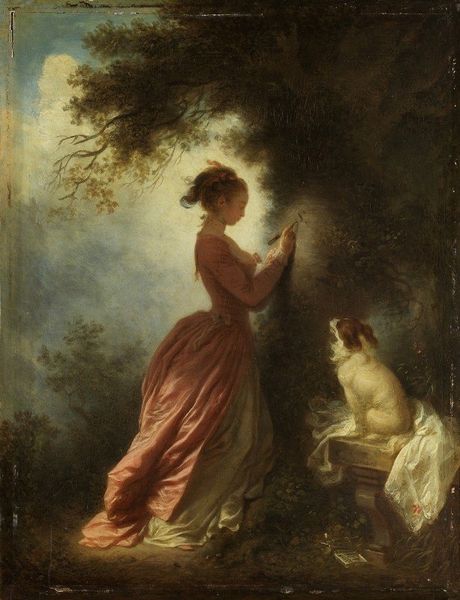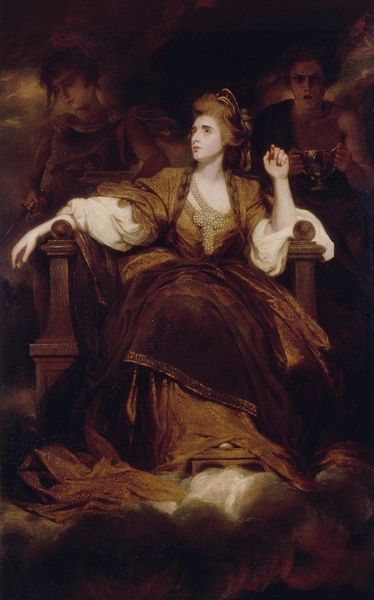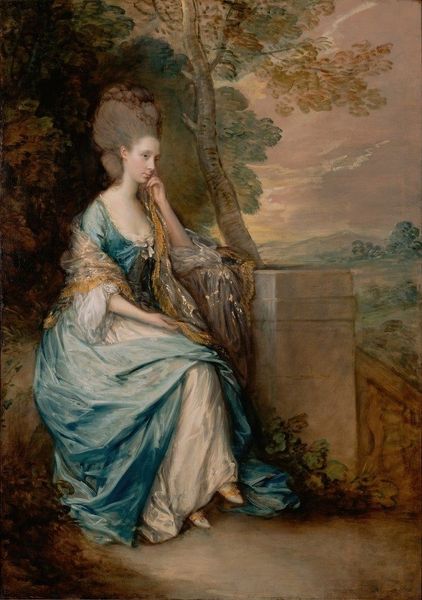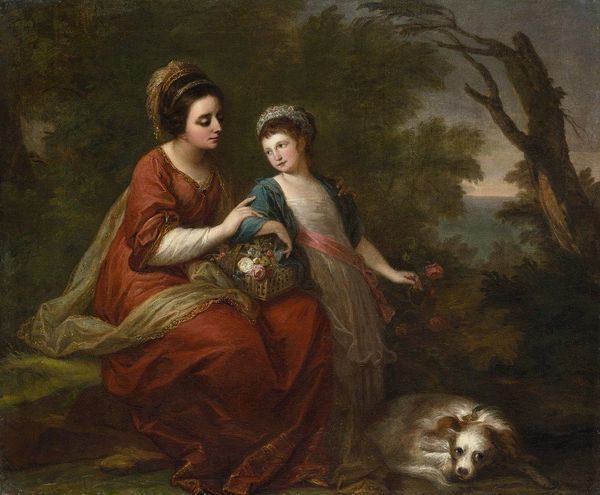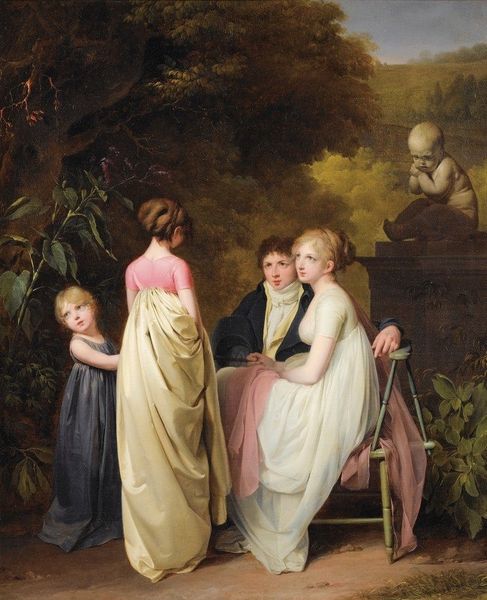
painting, oil-paint
#
portrait
#
figurative
#
allegory
#
painting
#
oil-paint
#
painted
#
figuration
#
oil painting
#
underpainting
#
history-painting
#
academic-art
#
rococo
Copyright: Public Domain: Artvee
Editor: Here we have Joshua Reynolds' "Lady Sarah Bunbury Sacrificing to the Graces," an oil painting from 1763. I’m immediately drawn to the composition - it feels both classical and theatrical. The way Lady Sarah is posed is striking, and the smoky color palette gives the scene an air of mystery. What formal aspects stand out to you? Curator: Reynolds’ use of color certainly merits close examination. The subdued tonality, what you've described as smoky, generates pictorial depth through subtle modulations rather than sharp contrasts. Note how the draping fabric that adorns Lady Sarah interacts with the textures throughout. In particular, consider the relationship with the rendering of the so-called Graces. Editor: It is definitely interesting how muted the Graces in the background appear, while Lady Sarah is the sharpest figure of the painting. Curator: Precisely. Now consider the geometry within the painting. We have a near pyramid formed by Lady Sarah, an urn on her right, and another female figure to the lower right, mirroring that form and suggesting a relationship through compositional mirroring. Are these intentional relationships purely formal or are there implied connections based on narrative? Is it correct to view them distinctly? Editor: That’s a great point about the geometry. The mirrored pyramid creates a satisfying balance but also highlights the distance in subject and material between Sarah and the other women in the picture. Is Reynolds playing with classical ideals of beauty, presenting Lady Sarah as the idealized mortal versus the ethereal goddesses? Curator: That interplay you noticed contributes to a reading of pictorial dynamics, which allows us a window into how such ideals are communicated to the contemporary audience. That subtle tension gives this painting so much vibrancy. Editor: This close look at form and relationships really transforms how I see this work, beyond just a historical portrait. Curator: Indeed, by observing formal qualities, one sees the work through a richer lens than the subject itself.
Comments
No comments
Be the first to comment and join the conversation on the ultimate creative platform.
